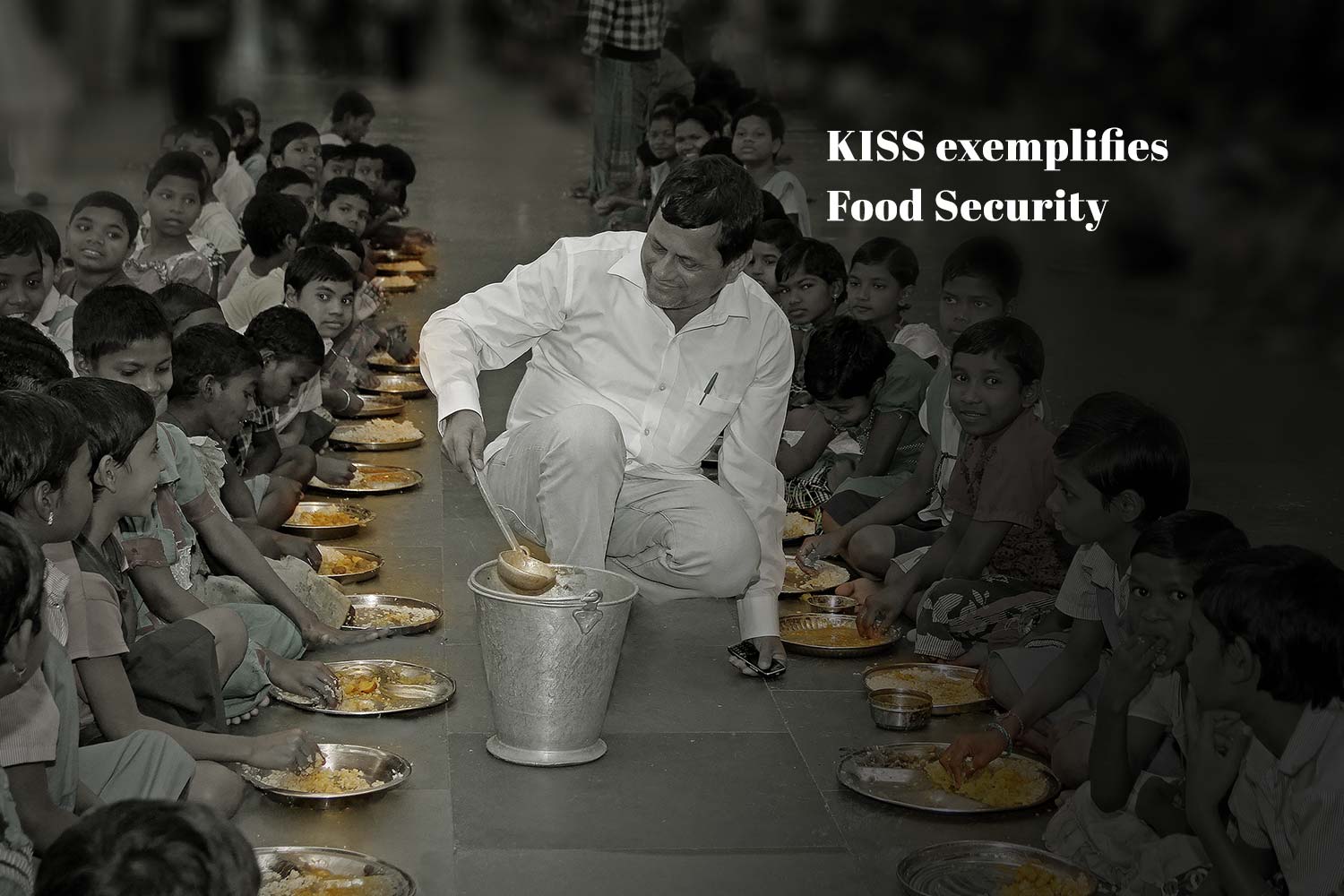Food is an essential requirement for functioning of all essential life processes. It is vital for good health and in prevention of diseases and their cure. Unhealthy food leads to numerous diseases and body malfunctioning of the organs. Food has since time immemorial has been the cause of integration and dissension of human civilizations. When man moved from the nomadic and hunter-gatherer stage to the sustained and settled life style; agriculture became the crucible of evolutionary change. Agriculture became a reliable source of food supply and the backbone of economies around the world and the primary contributor to the socio-economic development of any human society.
Rampant poverty prevails in many countries despite their rich natural resources of the 7 billion people inhabiting this world 795 million people in do not have enough to eat. One out of every 9 people in the world is under nourished. Fifty-six percent of the poor and the hungry belong to farming families. They also lack food hygiene and nutrition.
Food hygiene is very important to ensure availability of food safe for human consumption and the same needs to be monitored all along from production to consumption. Poor nutrition leads to poor metabolism. Children and women are the most vulnerable sections as they need adequate and appropriate food for growth and development.
The Government has come up with various directives and programmes to ensure food security and safety for all and especially the most vulnerable groups, children and women. The solution has never been complete and much remains to be done.
It is difficult to ingest the fact that one of the fastest growing economies of the world can’t feed all its citizens. The sustainable development agenda of removing poverty and hunger might seem like a dream to India despite being the world’s fastest developing economy. The recent Global Hunger Index 2018 (GHI) reveals that tackling hunger and undernutrition is a difficult task for the Modi Government. India stood 103rd on the Global Hunger Index along with Nigeria and has been categorised as a country with ‘serious’ levels of hunger.
The 13th edition of Global Hunger Index 2018 released by Welthungerhilfe and Concern Worldwide stated that although there has been a significant decline in the proportion of the undernourished population from 18.2% in 2000 to 14.8% in 2018, India still has GHI of 31.1 making the country fall in the ‘serious’ category. The best-performing countries have a GHI score as low as 5 (Belarus, Bosnia and Herzegovina, Chile, Costa Rica, Croatia etc).
The report uses four parameters to calculate the index – mainly proportion of undernourished in the population, prevalence of wasting in children under five years, the prevalence of stunting in children under five years and the mortality rate under five years of age. Out of the four parameters, three are dedicated to children below the age of five years. And in all this, India performed poorly with a GHI score of 30.5.
Malnutrition deaths have been common in Odisha which sadly has the highest Infant Mortality Rate next only to Assam and Madhya Pradesh. The instance of deaths due to malnourishment in Nagada Village of Odisha is a case vindicating this. Lack of Health and medical care facilities, ignorance, poverty, illiteracy and alienation of this tribal hamlet aggravated the situation. Yet, much of the respite is given by the Odisha’s own food security under the leadership of Shri Naveen
Patnaik ji.
It’s been a constant endeavour of his Government to ensure food security for every needy in the state. Odisha has come a long way now with its own food security to cover all needy paving the way for a healthy & thereby more productive & happier Odisha. Rs. 1 per Kilogram rice is the case in the point as the beacon of hope.
Amidst such dismal statistics and hope, Kalinga Institute of Social Sciences in Bhubaneswar stands out tall and shining in its endeavor towards sustainable alleviation of poverty and hunger using holistic and quality education.
This wholly residential educational institute and home for 50,000 poorest of the poor tribal children provides education from Kindergarten to post graduation along with lodging and boarding and comprehensive health care, all absolutely free. 12500 students have already graduated from this institute and have been proving to be change agents for their respective communities.
The indigenous children who did not have access to even one square meal a day and lived in deprivation get 4 wholesome meals at KISS. As a result, they are able to put forward outstanding performance in academics as well as sports and other fields of social relevance. The scale, speed and scope of KISS have been featured in the National Geographic Channel under the title- Mega Kitchens. KISS achieves SDG 2 (Zero Hunger) through SDG 4 (Quality Education) at a large scale.
I had to undergo abject poverty, hunger, and alienation in my early life. In his teens I had to grow and sell vegetables in the far off weekly markets and do errands for village folks to make some living. I assisted my widowed mother in the very cumbersome custom par boiling of paddy. My father, who too was an industrial laborer, had died in a train accident bequeathing endless poverty and pain for the family of seven siblings and a widowed mother and to live in an obscure village when the I was barely four years old.
Our family had to sleep early in the evening as we did not have enough food to eat hoping that sleep will help us avoid hunger. We often had to stay put with watersoaked rice and green leaves growing in the wild around village pond.
My mother believed that she should feed her son older to me, so that he would grow up well and become supportive to augment family’s income. As such she always set apart a lion’s share of food for the older sibling. Once, I, unaware of my mother’s designs took a morsel of the puffed rice she had kept separately for my elder brother. This had annoyed my mother and I received a good thrash from her in which I got hurt in the eye accidentally that left a permanent mark on my face and it keeps reminding me of the pathetic poverty I had to endure as a child.
My struggle against poverty is still on. Earlier in life I had to struggle for my own food and survival and later as I grew up and ever since became self-sustaining I have been struggling to arrange food for thousands of poor children at KISS. The need for food is the most pertinent.
A hungry mind doesn’t think about anything else but to satisfy this basic need. A starved body only cares about getting food. We need to rise above it. We have to bear in mind that the concept of Zero Hunger is broader and not limited to the fight against undernourishment. It aims to provide people with the necessary nutrients for a healthy life. Zero Hunger encompasses the eradication of all forms of malnutrition. So it is not just about feeding people but nourishing people as well. Our actions is our future. “Think. Eat. Save. Reduce foodprint.” Given that one-third of all food produced is discarded between harvest and home, minimising food waste is essential. Pope Francis said it best when he said that “wasting food is like stealing from the table of the poor.”
These are the reasons I am optimistic that the world will soon reach a tipping point for ending hunger. Now is the time for promises that have been made translate into a steep decrease in the number – now 870 million – of people who are still hungry today. It will not be easy, and progress may not be linear, but we have an unprecedented opportunity to eliminate one of humanity’s most ancient scourges.



Get Social